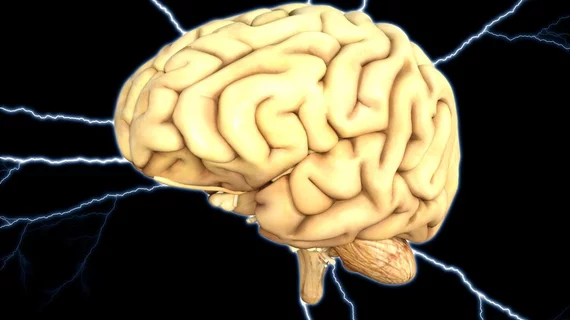Massachusetts Institute of Technology (MIT) researchers have developed a minimally invasive MRI sensor which can detect electrical currents and light produced by luminescent proteins.
“MRI offers a way to sense things from the outside of the body in a minimally invasive fashion,” said lead author and MIT postdoc Aviad Hai, PhD, in a prepared statement. “It does not require a wired connection into the brain. We can implant the sensor and just leave it there.”
Most methods of studying electric fields and light include inserting an electrode in the brain, which is invasive. The researchers sought to develop a non-invasive method. They utilized a tiny radio antenna and decreased its size to a few millimeters so that it could be implanted directly into the brain to receive radio waves emitted by water in the brain tissue.
“The sensor is initially tuned to the same frequency as the radio waves emitted by the hydrogen atoms,” the statement read. “When the sensor picks up an electromagnetic signal from the tissue, its tuning changes and the sensor no longer matches the frequency of the hydrogen atoms. When this happens, a weaker image arises when the sensor is scanned by an external MRI machine.”
The experiment showed that sensors can detect electrical signals similar to those produced by electrical pulses shot by single neurons or by electrical currents produced by a group of neurons.
The researchers tested their method in rats. They designed the sensors to detect light emitted by cells engineered to express luciferase—which produces bioluminescence. Luciferase location in the brain cannot be determined if it is deep in the brain. The sensor helps to identify cells that emit light.
“Luciferase is commonly engineered into cells along with another gene of interest, allowing researchers to determine whether the genes have been successfully incorporated by measuring the light produced,” the researchers said.
The research team plans to further decrease the size of the sensors so that more of them can be placed in the brain and can enable the imaging of light or electrical fields over a larger area of the brain. Their hope is that the sensor may be able to detect neural signals in the brain and may one day be able to discover other electromagnetic activity in the body.

